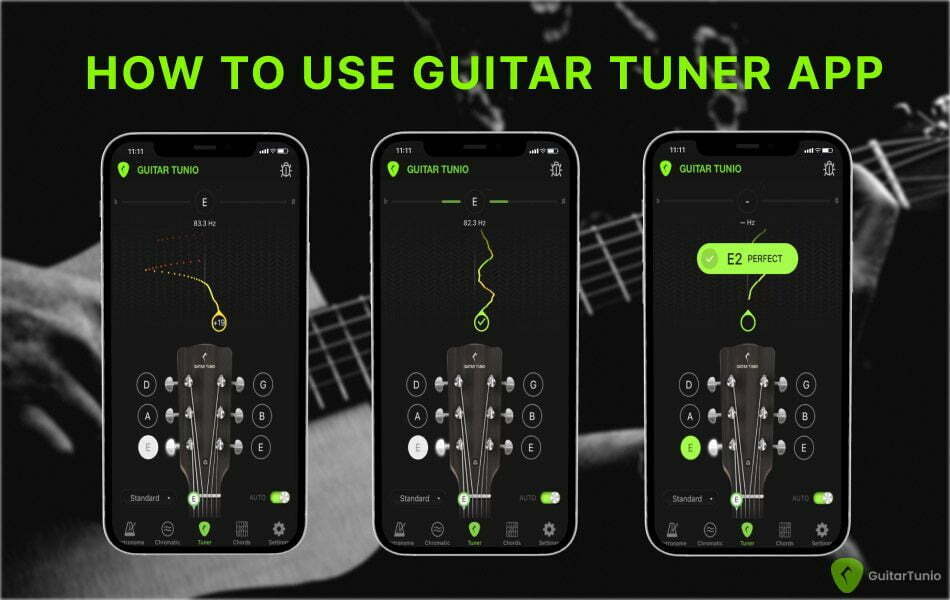Mastering the guitar involves numerous hurdles to overcome. Open D minor guitar tuning is one of the challenges. It has the potential to transform your approach to guitar playing. Get a taste of this tuning and explore new knowledge.
Contents
Open D Minor guitar tuning Basics
Open D minor guitar tuning involves adjusting the strings of the instrument to create a D minor chord when strumming open. This unique tuning offers a distinct and emotive sound, making it a favorite among guitarists for its versatility and ability to convey deep feelings in music.
Here’s how the strings are tuned in comparison to standard tuning (E A D G B E):
- 1st (high E): D
- 2nd (B): A
- 3rd (G): D
- 4th (D): F
- 5th (A): A
- 6th (low E): D

Open D minor guitar tuning vs open D tuning
Open D minor tuning and open D tuning are two distinct alternate tunings for the guitar that result in different chord structures and tonal qualities. Let’s compare these two tunings:
Open D Minor Tuning (DADFAD)
Tuning: In open D minor tuning guitar, the strings are tuned to create a D minor chord when strummed open. The tuning for open D minor is usually D-A-D-F-A-D.
Chord Produced: The open strings create a D minor chord: D-A-D-F-A-D.
Characteristics: a melancholic and emotive quality due to its minor tonality. It’s often associated with introspective and emotional playing styles.
Common Genres: This tuning is popular in folk, blues, and fingerstyle guitar playing, where the minor tonality can evoke deep emotions and moods.
Open D Tuning (DADF#AD)
Tuning: The tuning for open D is typically D-A-D-F#-A-D.
Chord Produced: The open strings create a D major chord: D-A-D-F#-A-D.
Characteristics: A bright and resonant sound due to its major tonality. It’s known for its harmonic richness and is suitable for creating open and ringing chord voicings.
Common Genres: Variety of genres, including folk, blues, rock, and slide guitar playing. It’s often favored for its ability to produce vibrant and expressive tones.
In summary, the main difference between open D minor guitar tuning and open D tuning lies in the chord created by the open strings. Open D minor tuning results in a D minor chord, while open D tuning results in a D major chord.
These tunings have distinct tonal characteristics and are used in different musical contexts. Open D minor tuning is known for its emotional and introspective quality, while open D tuning offers a rich and resonant sound that’s versatile across various genres.
How to tune open D minor with Guitar Tunio app
Introduction Guitar Tunio App
Guitar Tunio application is an ideal instrument for guitarists. Crafted with a user-friendly interface and a plethora of beneficial attributes to simplify your guitar learning journey. More than a conventional guitar tuning application, explore the array of functionalities our app provides:
Auto Mode
When you pluck a string, the app detects the note and provides guidance to help you achieve proper tuning. A visual diagram displays the tuning adjustments for each individual string you select.
Manual Tune
By tapping a string on the interactive headstock, you can listen to actual instrument samples of the corresponding note.
Chromatic Tuner
Play a string and tune it to any note present on the musical scale.
Tuning Options
Select from a variety of tuning choices, including standard, open A, drop D, and numerous other alternate tunings for both guitar and 19 other instruments. Additional tunings and all instruments may incur a fee.
Metronome
Tap to set the tempo and choose from multiple time signatures for rhythm practice.
Chords
Enhance your practice using an extensive chord library designed for both guitar and ukulele and more instruments.

Step-by-step guide for open D minor guitar tuning with Guitar Tunio
Easily achieve perfect guitar tuning with our premium Guitar Tunio app. Here’s a step-by-step guide to help you:
- Launch the Guitar Tunio app and access the tuning Mode to choose your desired tuning.
- Select your preferred operating mode (usually set to auto mode by default; adjust if necessary).
- Position your guitar close to your smartphone’s microphone and play the targeted string.
- Observe the tuner’s feedback carefully and make slight adjustments to the string’s tension.
- If the needle points left, it indicates the pitch is too low, prompting you to tighten the string.
Conversely, if the needle points right, the pitch is too high, requiring you to adjust the tuning peg to loosen the string.
Once the needle aligns with the center, your string is perfectly tuned. Proceed to the next string.
Repeat the process for the remaining strings, ensuring each string achieves the desired pitch.
In conclusion, open D minor guitar tuning is not just a technical feat but an artistic voyage that can truly transform your musical narrative. By exploring its rich harmonies and experimenting with open D minor, you’ll infuse your playing with a captivating melancholic quality.
